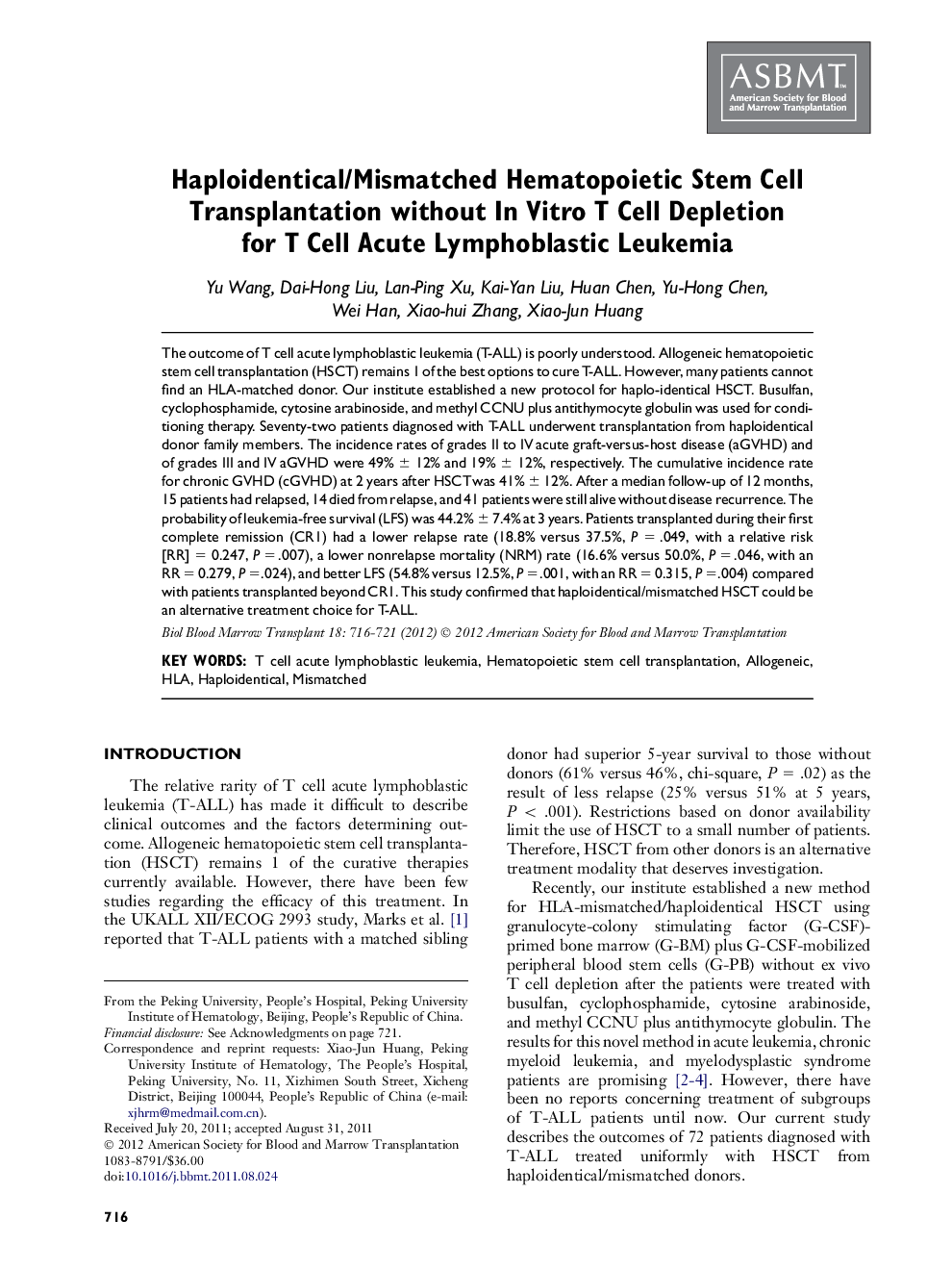| Article ID | Journal | Published Year | Pages | File Type |
|---|---|---|---|---|
| 2102805 | Biology of Blood and Marrow Transplantation | 2012 | 6 Pages |
The outcome of T cell acute lymphoblastic leukemia (T-ALL) is poorly understood. Allogeneic hematopoietic stem cell transplantation (HSCT) remains 1 of the best options to cure T-ALL. However, many patients cannot find an HLA-matched donor. Our institute established a new protocol for haplo-identical HSCT. Busulfan, cyclophosphamide, cytosine arabinoside, and methyl CCNU plus antithymocyte globulin was used for conditioning therapy. Seventy-two patients diagnosed with T-ALL underwent transplantation from haploidentical donor family members. The incidence rates of grades II to IV acute graft-versus-host disease (aGVHD) and of grades III and IV aGVHD were 49% ± 12% and 19% ± 12%, respectively. The cumulative incidence rate for chronic GVHD (cGVHD) at 2 years after HSCT was 41% ± 12%. After a median follow-up of 12 months, 15 patients had relapsed, 14 died from relapse, and 41 patients were still alive without disease recurrence. The probability of leukemia-free survival (LFS) was 44.2% ± 7.4% at 3 years. Patients transplanted during their first complete remission (CR1) had a lower relapse rate (18.8% versus 37.5%, P = .049, with a relative risk [RR] = 0.247, P = .007), a lower nonrelapse mortality (NRM) rate (16.6% versus 50.0%, P = .046, with an RR = 0.279, P = .024), and better LFS (54.8% versus 12.5%, P = .001, with an RR = 0.315, P = .004) compared with patients transplanted beyond CR1. This study confirmed that haploidentical/mismatched HSCT could be an alternative treatment choice for T-ALL.
